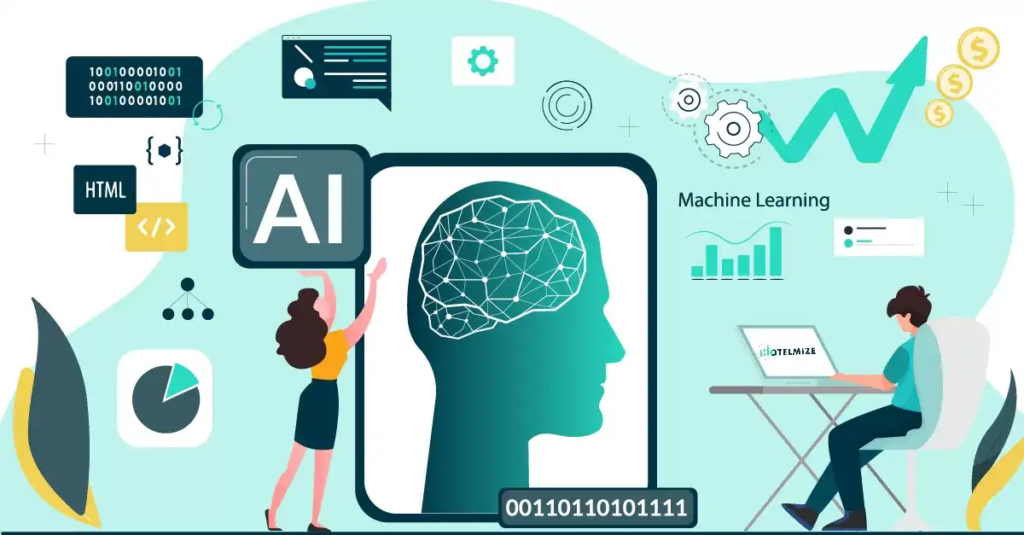Aligned steerable AI models are the next big thing in the evolution of artificial intelligence—an impetus toward having AI systems that are not just effective but also aligned with human intentions and values. As outlined by Paul Christiano, one of the major aspects of AI alignment is that we want to ensure that machines are acting on what people actually want. At the same time, with the very meaning of being steerable, fine-tuning and correction of operations to reflect human expectations are enabled. All these foster more cooperative relations between human and machine, leading to a future in which AI systems are not just tools to realize objectives but partners. The current paper tries to elaborate on the very definitions of aligned steerable AI models, their major features, and how they surface in various sectors’ applications and implications.
Definitions
The merging of alignment and steerability for the purposes of our definition gives rise to the ideal that AI systems should not only act in line with human objectives but also be flexible to changing needs. As per Richard Ngo,
“Alignment is about ensuring that the AI system accurately reflects the operator’s goals.”
This definition implies that an AI system described as aligned will proactively seek to align its perceptions and action executions with human interests.
In contrast, steerability gives emphasis to embedding mechanisms for the operators to be able to steer or tune its behavior at any point, dynamically making it relevant and operational as situations evolve. For example, in the case of a self-driving car, an aligned steerable AI model would drive along not only the routes as per the program but also new traffic laws, changing road conditions, and the preferences of its passengers. Therefore, the convergence of these two dimensions, alignment and steerability, ensures that AI systems work productively while being accountable and responsive to human oversight.
Properties of Aligned Steerable AI Models
The properties of aligned steerable AI models are dependent on their ability to embody human values, transparency, and accountability. Steerable AI approaches provide mechanisms to align an AI system’s behavior with such values, thereby avoiding unintended consequences and fostering ethical decision-making. The difficulty of aligning AI arises from the fact that human values need to be meticulously encoded into the algorithms governing an AI’s behavior.
This challenge is further multiplied by the constant need for recalibration: as human values evolve, so too should AI systems reflect them. For instance, in applications like healthcare, aligned steerable AI models could be programmed to prioritize patient well-being and ethical standards. Healthcare professionals could set the parameters at the level of need for particular patients or reflect a shift in medical guidelines. In this way, AI operates not just as a rigid decision-maker but as a flexible tool, benefiting from human expertise and oversight.
Real-Life Applications and Implications
Theoretical discussions are one thing, but the implementation and impacts of aligned-steerable AI models are bound to reach new heights in several domains, including education, transportation, and customer service. In a learning system, aligned-steerable AI can bring the best outcomes to education by supporting customization to match the styles and speed at which learners capture knowledge. This flexibility keeps the AI aligned with students’ and educators’ goals, ensuring that engagement is most useful for understanding.
Read Also : How Advanced Digital Intelligence Benefits Society
Other real-life areas where such concepts are implemented include autonomous vehicles and drone technology, which embody safe and ethical decision-making. As discussed with self-driving cars, these technologies must negotiate complex scenarios where human lives are at risk, making the alignment of AI systems with human values crucial for their acceptability and efficacy.
Using steerable AI strategies not only improves operational efficiency but also instills trust and accountability, motivating a supportive partnership between humans and machines.
Conclusion
Aligned steerable AI models could represent a new way of thinking about artificial intelligence in relation to human values and steerability of AI behavior. This approach could align AI models with human intentions, opening new avenues for enhancing the morality and conduct of AI applications across various domains. With a combined set of features shared by aligned steerable AI models, transparency challenges are more easily addressed, as AI is acting toward a system of values. These models could have far-reaching implications for society, particularly in fields where normatively informative decision support is necessary, such as education and transportation. In the future, AI systems may emerge as trustworthy partners in various human endeavors.


